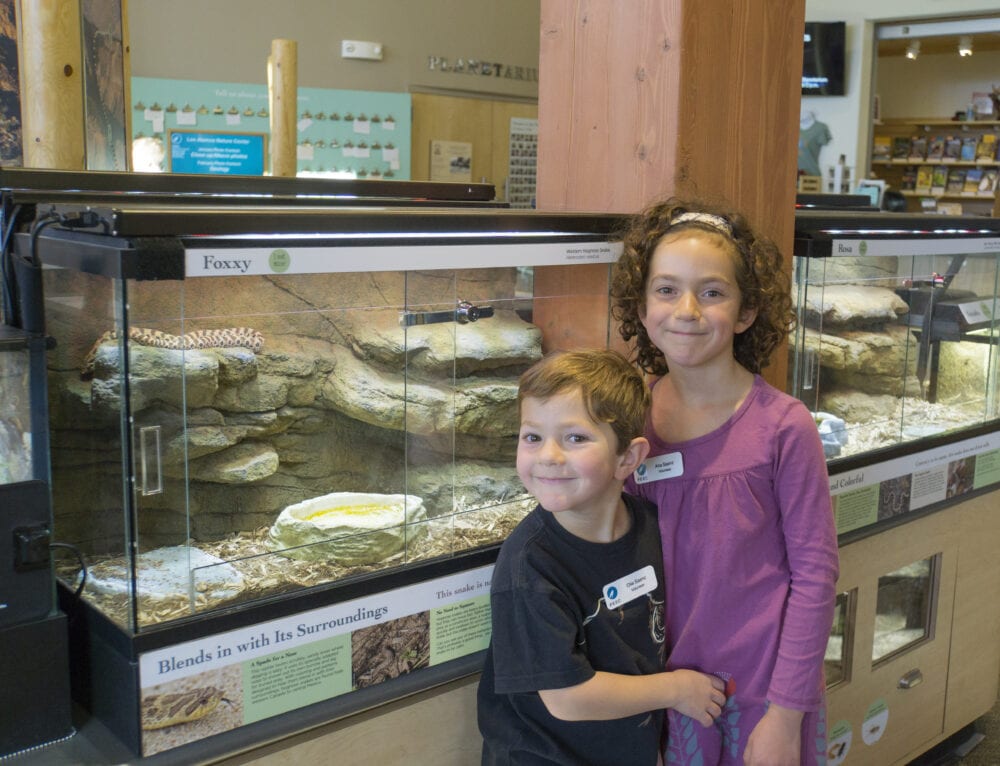This article was originally written for and featured in Tumbleweeds Newspaper for Santa Fe Families’s Fall 2018 publication.
We are an international family of four with an extended family spread across two countries and, within the U.S., spread coast to coast. We are transplants, hoping to make Los Alamos our home. We fit right into Los Alamos, a city to which many people move — far from their family — for a job. In this situation, finding a community and a support system is important for happiness.
We sought to build this system upon arriving in Los Alamos and participated in a variety of kids’ activities around town. Nature Playtimes at the Los Alamos Nature Center, where educators lead crafts, activities, and story time became a favorite. But the kids soon outgrew the program, and we moved on to other activities, such as dance, sports, and music. However, our daughter, Ana, continued to show a love and conscientiousness for animals and nature that were cultivated in part through participation in this early program. When she was seven, she saw a flier for volunteer opportunities at the nature center. She inquired, and the volunteer coordinator responded by pairing her with a teen for “critter care.” Thereafter, once a week we have gone to the nature center, and Ana has learned the essentials of caring for animals.
During the first weeks that Ana volunteered, my son, Olie, and I spent our time in the nature center’s play area. But soon he was intrigued by Ana’s new activity. Although he was too young to help with critters, we asked if we could volunteer in a different capacity. Soon the three of us had weekly volunteer jobs. One day Olie and I would fold brochures, while another day we would set up the planetarium for a show, tidy the classroom, count money in the donation jar, or sort classroom materials. We have realized that the behind-the-scenes jobs and tasks required to operate an organization like the nature center are endless. The kids began to take ownership and great pride in their weekly volunteer work and responsibilities. A year and a half later, Ana is able to care for the critters almost entirely by herself, and Olie eagerly continues to help with day-to-day jobs.
Some benefits of volunteering are obvious. Helping and contributing to an organization gives the kids a sense of purpose and belonging. Completing jobs brings satisfaction. The kids feel good about themselves and their work. But the benefits span beyond the obvious. We have set aside time for us as a family; my husband or I join the kids each week, and we take a back seat, watching and observing our kids take charge to complete their jobs. We have had time to talk to other volunteers, who all have interesting stories and hobbies. We have taken the time to speak with the employees and learn more about their jobs and passions. The kids have been able to give tours of the nature center to their friends and relatives. When we walk in, the kids see friendly, familiar faces and have the confidence to start a conversation.
One of Olie’s first jobs was to help prepare mailings for members. We walked into a room in which a handful of older women sat folding pamphlets and placing stamps and address labels. I thought, “Oh dear, we are going to seriously mess up their system!”
Being five at the time, Olie pretended his hand was an airplane and began flying the pamphlets from person to person. The women became amused and the entire room looked forward to their delivery. Soon Olie was part of the team. When we see these women around town, Olie runs over to say hi or to give a hug. These relationships are difficult to build in the daily grind with young children and working parents. Often, we are in a rush, rarely taking time to familiarize ourselves with people that do not have an obvious connection to us. Volunteering has enabled us to slow down, to talk to folks that we might not normally have the chance to meet, and by doing so to become part of a larger community. This community, in turn, supports and enhances the kids’ character, self-esteem, and self-worth.
And Ana — because her initial inquiry into volunteering was taken seriously — has become motivated to find more ways to help. She recently set up a lemonade stand to raise money for the nature center’s educational programs; she now wants to help students from around New Mexico participate in programs that teach about our environment. Never mind the fact that she only raised $4.25, she now realizes that the center’s mission extends beyond critter care and animals and that she can be a small part of this mission. She has learned a life lesson that is difficult to teach: Communities are part of larger communities, and we as individuals (regardless of age) are able to become involved in these communities. And this involvement makes you feel good.
By Natanya Civjan

